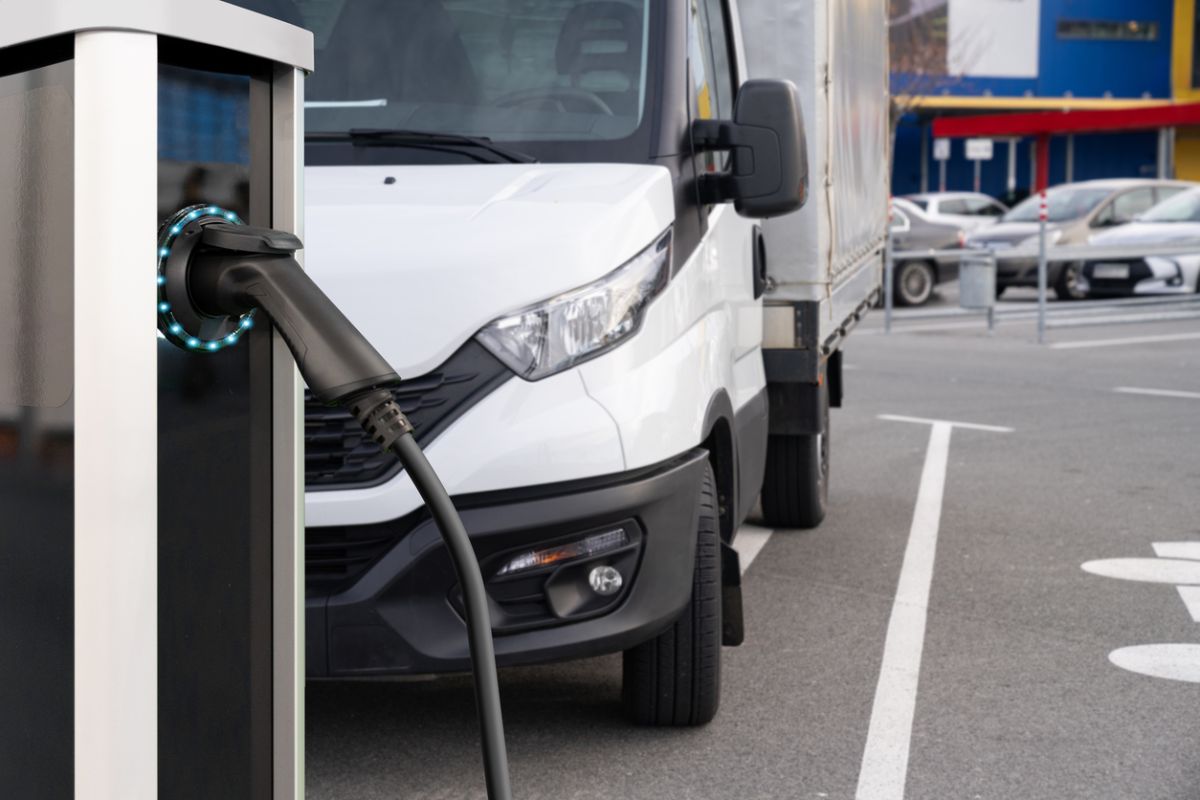Monica Ramirez Ibarra, Ph.D., and Jean-Daniel Saphores, Ph.D.
Department of Civil and Environmental Engineering
University of California, Irvine
The Issue
Much has been written about the potential benefits of electric and connected vehicles. However, one important, but often overlooked, implication of electrifying trucks is they can be powerful enough to eliminate the moving bottleneck1 or queuing effect created by slow-moving conventional heavy-duty trucks. This is because electric trucks are much more responsive compared to conventional diesel trucks as electric motors provide maximum torque from a standstill. This torque could substantially increase road capacity in areas with high commercial truck traffic, especially around major ports or logistics complexes, thus alleviating the need to add new lanes to local freeways.
Focusing on freight corridors in Southern California, this research quantifies potential speed improvements and road infrastructure implications from replacing conventional drayage trucks with electric and/or connected heavy-duty trucks, and explores the implications for infrastructure financing. This study is believed to be the first to conduct a detailed analysis of how electric and connected trucks could affect traffic conditions and roadway demand in an expanded freight corridor.

Key Research Findings
Without additional road capacity or major changes in vehicle technology, average road speeds of major freight corridors could drop dramatically by 2035.
Based on cargo growth projections for 2035, adding lanes and/or improving ramps would not be enough to restore drayage truck speeds to 2012 levels.
Equipping drayage trucks with Cooperative Adaptive Cruise Control only has a small impact on speeds.
However...
Improving some ramps and replacing diesel drayage trucks with electric trucks (with a similar horse power) could accommodate 2035 cargo growth projections. Replacing sluggish diesel port trucks with more responsive and powerful 1,000-horsepower electric trucks would substantially improve average freeway speeds. Combined with ramp improvements, it would be enough to improve average speeds for both light-duty vehicles and drayage trucks above 2012 levels and could substitute for politically controversial road infrastructure investments like adding freeway lanes.
New vehicle technologies may make road expansion unnecessary in some cases. Vehicle electrification coupled with increased connectivity and automation could greatly improve vehicle operation and performance to the extent that road expansion (in some cases) may not be needed. In turn, policymakers should carefully consider the performance of new vehicle technologies when determining future road infrastructure improvements and expansions. And given the potential cost savings associated with avoided road expansion, policymakers may want to consider how to further expedite adoption of these vehicles, such as providing purchase incentives for smaller truck operators and banning heavy-duty diesel vehicles along specific freight corridors.
READ THE POLICY BRIEF
READ THE RESEARCH REPORT
More Information
More information is shared in the paper “1,000 HP Electric Drayage Trucks as a Substitute for New Freeway Lanes Construction" 2 available above. Jean-Daniel Saphores can be reached at saphores@uci.edu.
1 Newell, G.F. A moving bottleneck. Transportation Research Part B: Methodological 32, 531–537, 1998. https://doi.org/10.1016/S0191-2615(98)00007-1
2 From Ramirez-Ibarra, M., and Saphores, J. D. “1,000 HP electric drayage trucks as a substitute for new freeway lanes construction.” Transportation Research Part A: Policy and Practice, 171, 103646, 2023. https://doi.org/10.1016/j.tra.2023.103646
DOI:10.7922/G2F769WD
Project ID: UC-ITS-2020-53